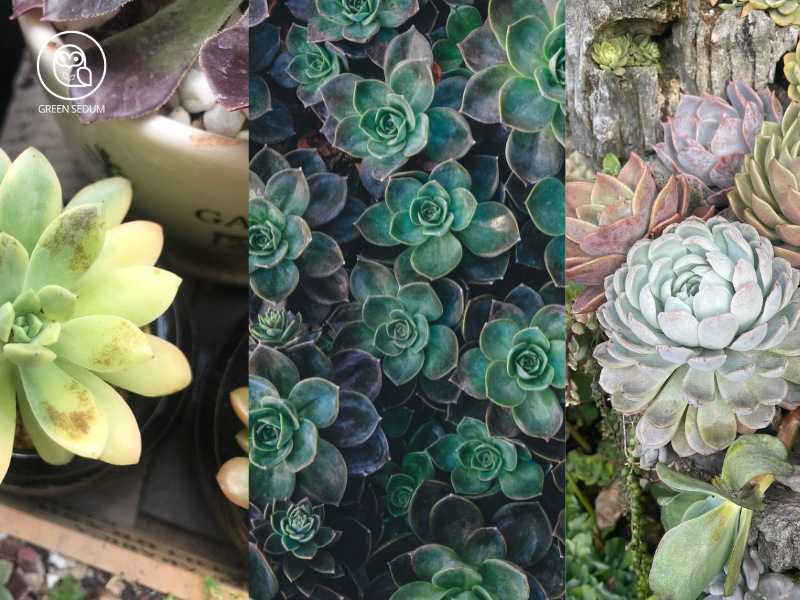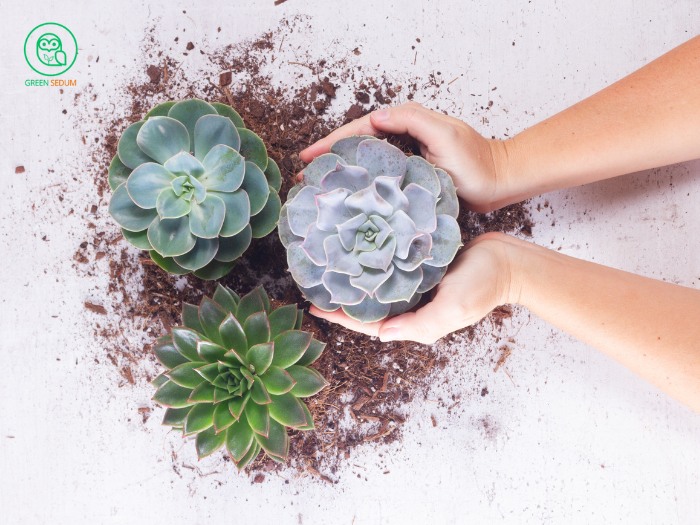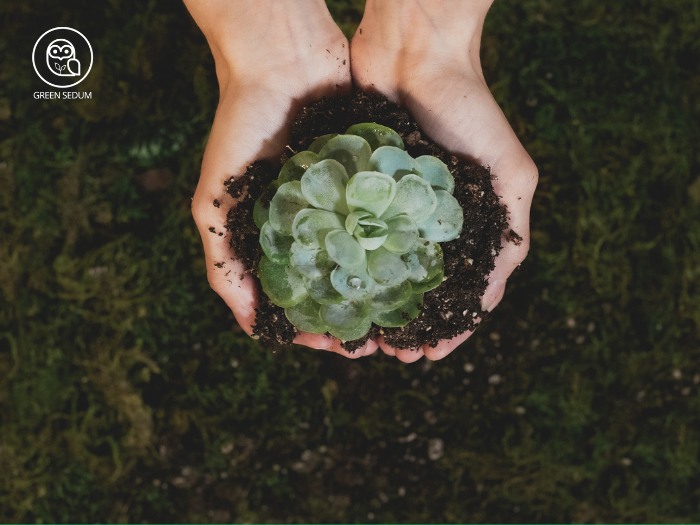Succulents are popular for their unique appearance and drought tolerance, making them ideal for homes and offices. Despite their resilience, they can face issues like overwatering, underwatering, leaf burn, or pests. When these problems occur, succulents may wilt and lose their beauty. However, with a few simple steps and essential knowledge on how to revive a succulent, you can help it thrive again.
1. Signs Your Succulent Needs Reviving
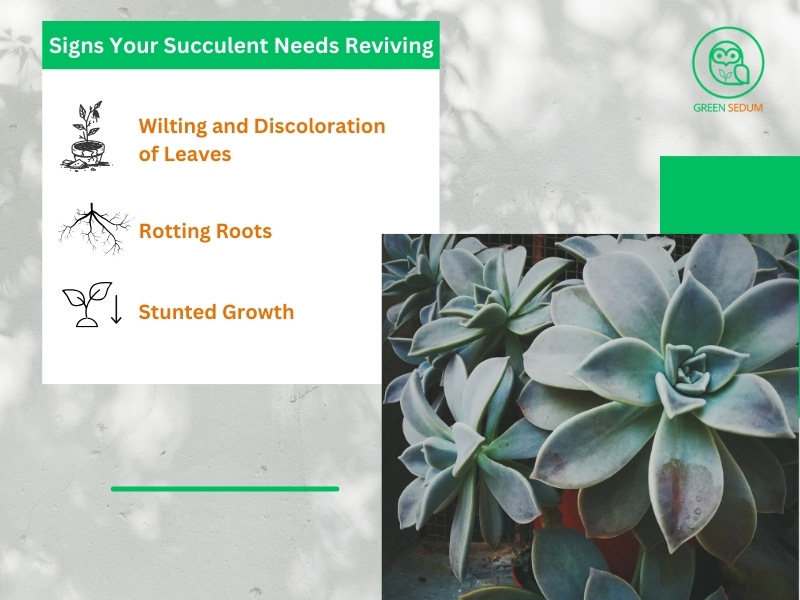
Wilting and Discoloration of Leaves
One of the first signs that your succulent needs reviving is when its leaves start to wilt and change color. Succulent leaves are typically plump and vibrant green, but when they wilt, they become wrinkled and soft. Discoloration may include yellowing, browning, or even blackening if the issue is severe. Understanding how to revive a succulent begins with recognizing these symptoms of a dying succulent.
Rotting Roots
Root rot is a serious issue often caused by overwatering. When succulent roots are waterlogged for too long, they begin to decay, becoming mushy and losing their ability to absorb water and nutrients. If you notice blackened roots with a foul odor, it’s a clear sign that your succulent is in trouble and needs immediate attention. Learning how to revive a succulent involves addressing root rot promptly to prevent further damage.
Stunted Growth
Another indicator that your succulent needs reviving is when it shows minimal to no growth. If your succulent isn’t producing new leaves, flowers, or increasing in size despite proper care, it may be suffering from nutrient deficiencies, inadequate light, or pest attacks. In such cases, reassess the living conditions of your succulent and take necessary steps for revival. Knowing how to revive succulents effectively will help you identify and remedy these issues, ensuring your plant’s health and growth.
>>> Discover more: A-Z Steps to Plant Succulents That Thrive in Sun and Rain
2. How to Revive an Overwatered Succulent
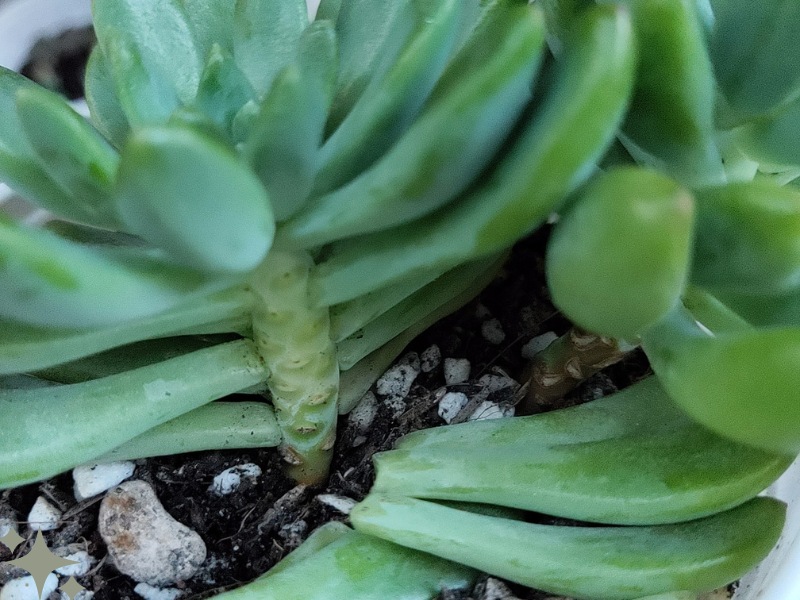
Signs of Overwatering
Overwatered succulents often exhibit signs such as soft, mushy leaves that may turn yellow or brown and easily fall off. The roots of the plant can become rotten, appearing mushy and turning black. If left untreated, the succulent may eventually die due to the inability to absorb water and nutrients.
Steps to Revive an Overwatered Succulent
Step 1: Check and Trim the Roots
Firstly, carefully remove the succulent from its pot and inspect the roots. If you find any rotten roots, use sterilized sharp scissors to trim away the affected parts. Trimming the roots will prevent the spread of root rot and create opportunities for new growth.
Step 2: Replace with Fresh Soil
After trimming the roots, repot the succulent with fresh soil. Use well-draining soil, such as a specialized succulent mix or a blend containing sand and perlite. Fresh soil will help prevent waterlogging and improve drainage, creating favorable conditions for new roots to develop.
Step 3: Place in a Bright Location
Finally, place the succulent in a location with plenty of indirect sunlight. Natural light will aid in photosynthesis and promote rapid recovery. Avoid watering immediately after repotting; wait until the soil is completely dry before watering again. This will prevent the succulent from becoming overwatered again and allow time for new roots to establish.
3. How to Revive an Underwatered Succulent
Signs of Underwatering
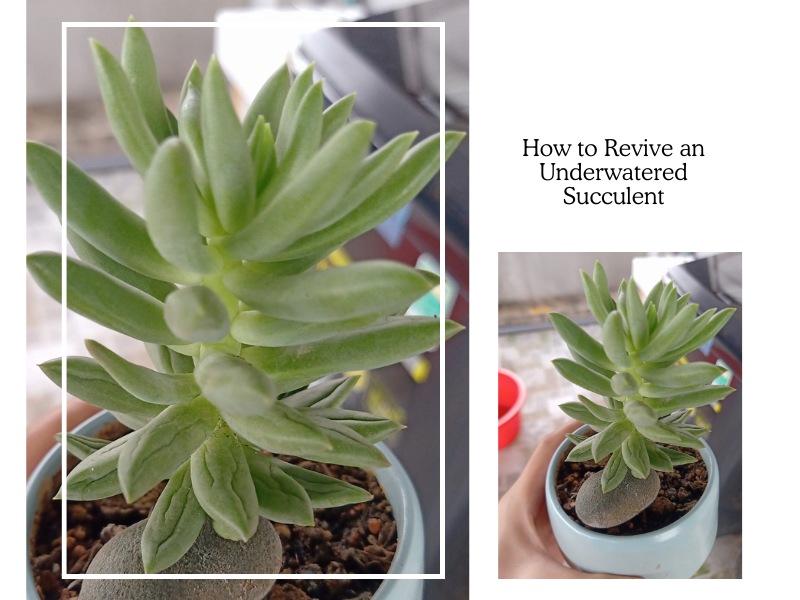
An underwatered succulent typically shows signs such as wrinkled, dry leaves that may turn brown or gray. The leaves can also become easy to fall off, and the plant may appear lackluster and less vibrant than before. If this condition persists, the succulent may experience stunted growth or stop growing altogether.
Steps to Revive an Underwatered Succulent
Step 1: Water Slowly and Evenly
To revive an underwatered succulent, the first thing you need to do is water it slowly and evenly. Avoid watering too much at once as this can shock the plant. Water a small amount and wait for the soil to absorb it fully before watering again. Repeat this process until the soil is evenly moist.
Step 2: Use Well-Draining Soil
Ensure the succulent is planted in well-draining soil. A mix with sand and perlite is ideal to help the succulent efficiently absorb water without becoming waterlogged. Good-draining soil will maintain the necessary moisture for the plant without causing water retention issues.
>>> Explore this topic: Your Guide to Fertilizing Succulents: 9 Best Products and Usage Tips
4. How to Revive a Succulent with Sunburned Leaves
Signs of Sunburned Leaves

A succulent with sunburned leaves typically shows signs such as faded color, pale spots, or darkened patches on the leaf surface. These leaves may become dry, brittle, and easy to fall off. If not addressed promptly, sunburned leaves can spread and affect the entire plant.
Steps to Revive a Succulent with Sunburned Leaves
Trimming Burned Leaves
Firstly, use clean pruning shears to trim away any leaves that are sunburned or severely damaged. Removing these leaves not only cleans up the plant but also prevents the spread of sunburned areas.
Move the Plant to Suitable Lighting
Place the succulent in a location with appropriate lighting. For succulents that have experienced sunburn, ensure they are positioned in a spot with bright but indirect sunlight. Direct sunlight can increase the risk of leaf burn, so find a location with shade or filtered light during the morning or afternoon.
5. How to Revive a Succulent Affected by Pest Infestation
Signs of Pest Infestation
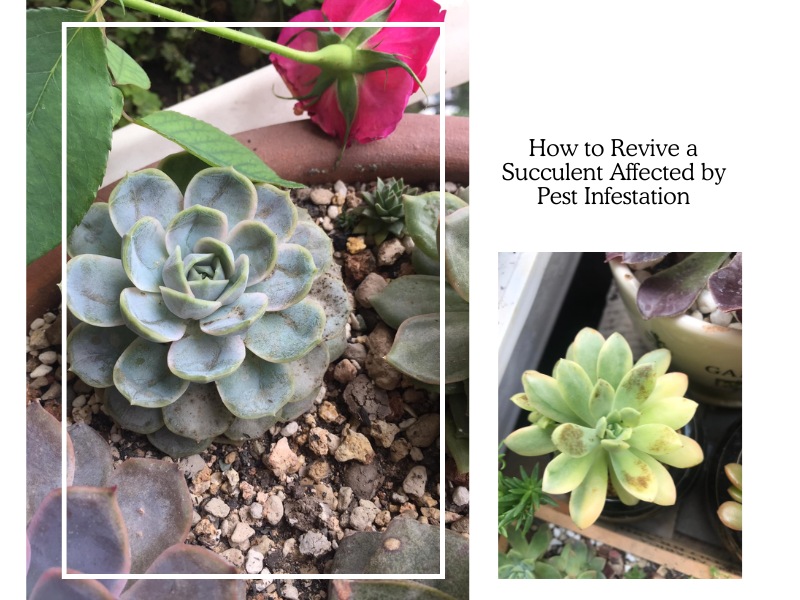
Signs that a succulent is affected by pest infestation typically include the presence of small insects or spiders on the stems, leaves, or in the surrounding soil. The plant’s leaves may turn yellow, wilt, and fall off prematurely. Additionally, you might notice signs of pest damage such as chew marks on the leaves or their excrement.
Steps to Revive a Succulent Affected by Pest Infestation
Isolate the Infected Plant
Firstly, isolate the succulent affected by pest infestation from other plants to prevent the spread of pests. Place the plant in a separate location where it won’t come into contact with other plants indoors or outdoors.
Use Organic Pest Control
Use organic pest control methods to treat the succulent affected by pest infestation. Organic pest control products are environmentally friendly and safe for both the environment and humans compared to conventional chemical pesticides. Apply the pest control product according to the manufacturer’s instructions, ensuring thorough coverage to eradicate all pests and prevent their recurrence.
>>> See related content: Creative Ideas for Arranging Succulents in a Pot for Stunning Displays
6. Tips for Keeping Succulents Healthy
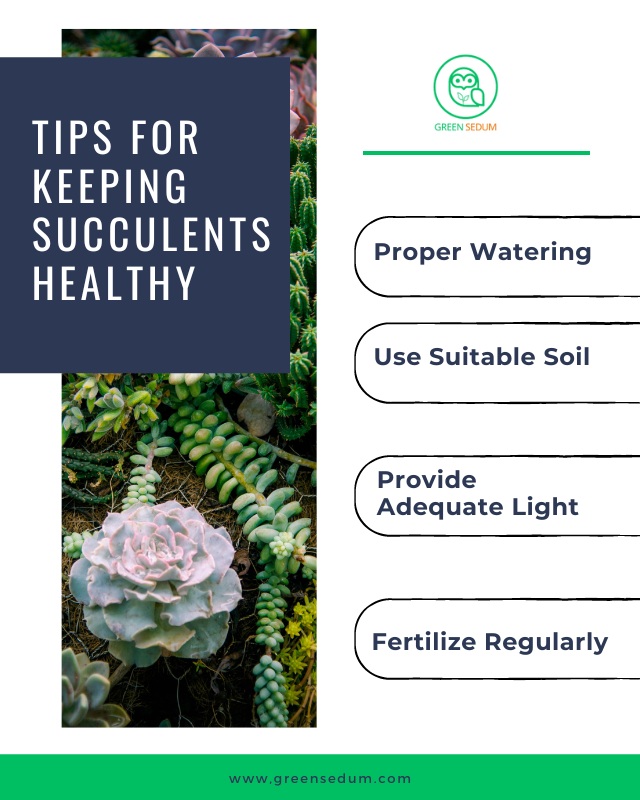
Proper Watering
To ensure your succulents thrive, it’s crucial to water them correctly. Here are some tips to follow:
Watering schedule: Water when the soil is completely dry. Avoid overwatering, as it can lead to root rot.
Watering method: Use the bottom watering technique to prevent wetting the leaves and the growth of mold.
Use Suitable Soil
Choosing the right soil is essential for maintaining healthy succulents. Characteristics of suitable soil include:
Good drainage: Cactus or succulent mix soil drains well, helping to prevent root rot.
Moisture retention: Ensure the soil retains enough moisture without being overly damp.
Provide Adequate Light
Succulents need sufficient light to thrive. Select a location with ample natural light, either direct or indirect from a window, to ensure the plant can absorb enough energy.
Fertilize Regularly
To keep succulents healthy, fertilize them regularly. Choose organic fertilizer or cactus/succulent-specific fertilizer following the usage instructions to provide the necessary nutrients.
Following these tips will help you maintain the health and vitality of your succulents throughout their care routine.
7. Conclusion
Reviving succulent plants is not just about rescuing them; it’s also an opportunity to show your love and care for your plants. Understanding how to revive a succulent involves identifying and applying appropriate methods such as soil care, providing light, and adjusting watering.
Whether your succulent is dying due to overwatering, lack of light, or poor soil, you can help it recover and thrive with the right approach. Be patient and proud of the achievements you’ll make through caring for your succulent plants, transforming a dying succulent into a vibrant one.
8. Frequently Asked Questions (FAQ)
How can I tell if my succulent is underwatered or overwatered?
To identify underwatering in your succulent, check if the leaves are wrinkled and pale.
An overwatered succulent typically has soft, mushy leaves, and you may often see water draining from the pot.
What is the best soil for succulents?
The soil should have good drainage to avoid overwatering and root rot.
A mix of sand and perlite can be a suitable choice to provide adequate airflow for the roots.
How do I prevent pests and diseases in succulents?
Regular inspection and isolating plants if pests or diseases are detected are essential.
Using organic pest control methods is a safe and effective solution.
My succulent has burnt leaves, what should I do?
Trim away burnt leaves to prevent the spread of this condition.
Move the plant to a location with suitable light, avoiding excessive direct sunlight.
>>> Explore similar topics:
- How Often to Water Succulents: Essential Tips for Every Season
- Expert Tips on How to Grow Succulents
- The Ultimate Guide to Pots for Succulents: Over 7 Styles You’ll Love

I’m Will Bernan, a gardening enthusiast with over 9 years of experience in succulents, indoor plants, and sustainable living. I also manage SEO for eco-friendly textile brands, promoting fabrics like bamboo and organic cotton.

